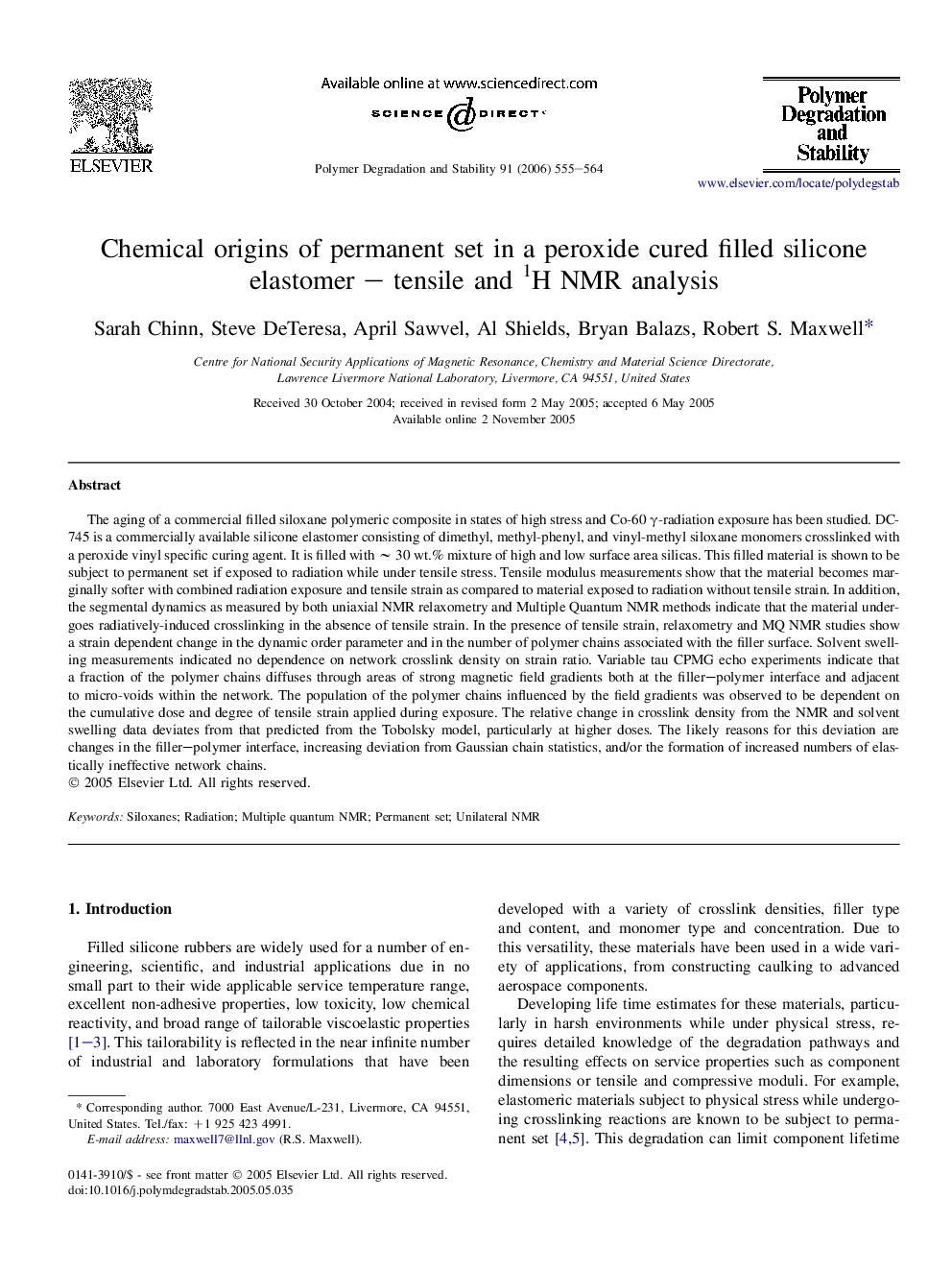| Article ID | Journal | Published Year | Pages | File Type |
|---|---|---|---|---|
| 5205064 | Polymer Degradation and Stability | 2006 | 10 Pages |
The aging of a commercial filled siloxane polymeric composite in states of high stress and Co-60 γ-radiation exposure has been studied. DC-745 is a commercially available silicone elastomer consisting of dimethyl, methyl-phenyl, and vinyl-methyl siloxane monomers crosslinked with a peroxide vinyl specific curing agent. It is filled with â¼Â 30 wt.% mixture of high and low surface area silicas. This filled material is shown to be subject to permanent set if exposed to radiation while under tensile stress. Tensile modulus measurements show that the material becomes marginally softer with combined radiation exposure and tensile strain as compared to material exposed to radiation without tensile strain. In addition, the segmental dynamics as measured by both uniaxial NMR relaxometry and Multiple Quantum NMR methods indicate that the material undergoes radiatively-induced crosslinking in the absence of tensile strain. In the presence of tensile strain, relaxometry and MQ NMR studies show a strain dependent change in the dynamic order parameter and in the number of polymer chains associated with the filler surface. Solvent swelling measurements indicated no dependence on network crosslink density on strain ratio. Variable tau CPMG echo experiments indicate that a fraction of the polymer chains diffuses through areas of strong magnetic field gradients both at the filler-polymer interface and adjacent to micro-voids within the network. The population of the polymer chains influenced by the field gradients was observed to be dependent on the cumulative dose and degree of tensile strain applied during exposure. The relative change in crosslink density from the NMR and solvent swelling data deviates from that predicted from the Tobolsky model, particularly at higher doses. The likely reasons for this deviation are changes in the filler-polymer interface, increasing deviation from Gaussian chain statistics, and/or the formation of increased numbers of elastically ineffective network chains.
